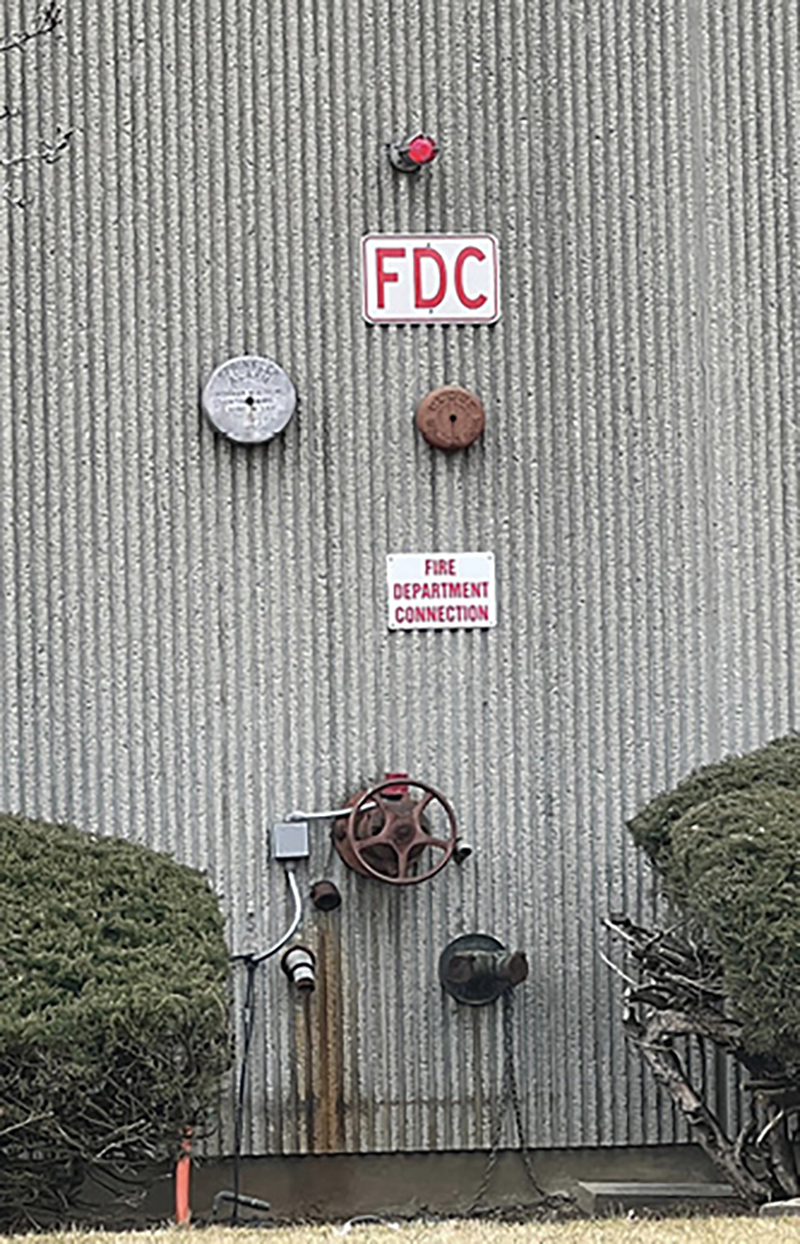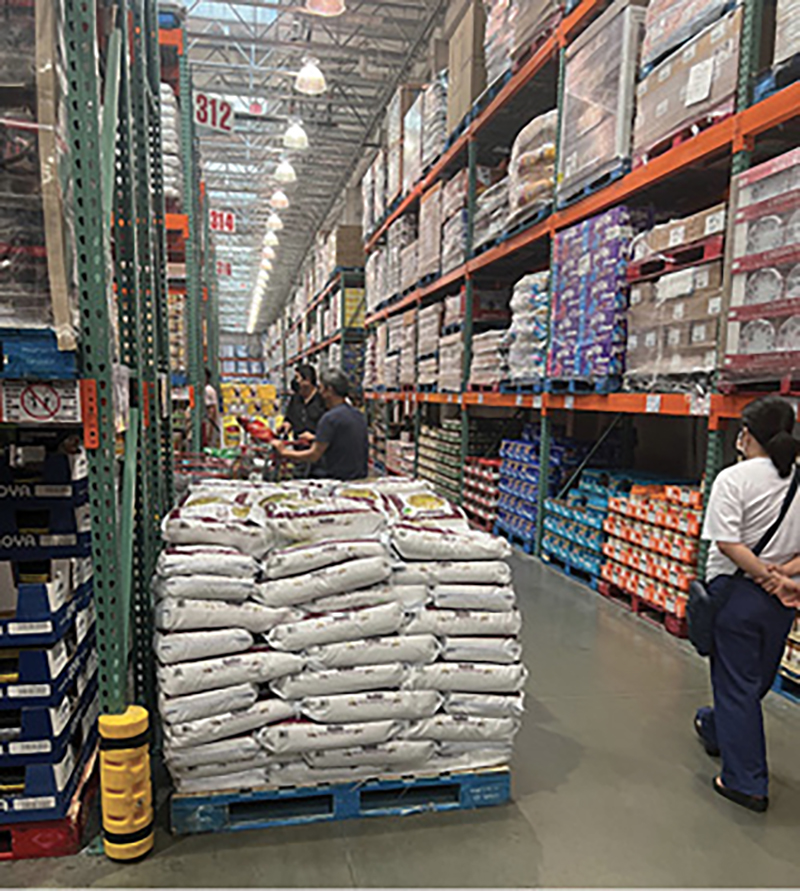In the November 1991 edition of Fire Engineering, I authored an article entitled “Avoiding Warehouse Disasters: The San Antonio Approach,” which detailed a code enforcement effort intended to ensure that warehouse sprinkler system designs in San Antonio, Texas, actually met or exceeded the high-piled stock fire hazards stored inside these buildings.
- Sprinkler Support Crucial at Large Warehouse Fires
- Evaluating warehouse sprinkler systems
- Fighting Fire in Sprinklered Buildings
As the administrator of engineering services for the San Antonio Fire Department at the time, I was coming across many existing “speculative” warehouses in which new tenants proposed high-piled rack storage (20-plus feet) of substantial amounts of Group A plastics and the like; the problem was that some of these warehouses actually had sprinkler systems designed for a much lower hazard.
The 1980s were a time of significant warehouse fires, including the aerosol can-fueled 1982 K-Mart fire in Pennsylvania and the 1987 Sherwin Williams paint warehouse fire in Ohio. In both cases (and many more), the sprinkler systems were overwhelmed by the fuel load and arrangement.
I realized we needed to get ahead of this problem by getting to the heart of the issue: We needed detailed information about the proposed storage itself. With hundreds of Type II noncombustible warehouses (the construction-type focus of this article) spread across the city and new ones being built all the time, it was imperative that we take a proactive approach to heading off a warehouse disaster. The result was San Antonio’s “commodity letter.”
The commodity letter form was filled out by each new tenant moving into an existing warehouse, written on the tenant’s own letterhead. The letter detailed many things, including the commodities themselves, packaging, pile heights, type of storage (rack, shelves, solid pile, palletized), aisle widths, and floor arrangements. Of course, these were all typewritten documents at the time.
We compared the letter with the capabilities of the sprinkler system in terms of the system’s sprinkler design density/operating area, and what we found was often eye-opening. Some of the system designs were incapable of handling the proposed storage. Some systems had to be upgraded (larger feed mains, pumps, and so on). Systems that couldn’t be upgraded resulted in reduced pile heights: 12 feet maximum for Class 1-4 commodities and 6 feet maximum for “Class 5” commodities (an old classification number for certain higher hazard materials such as rubber tires). In such situations, we had the tenant paint a red stripe inside the warehouse (at 12 feet and 6 feet) to alert warehouse workers to the height limits.
It became a permanent document in the inspection file system, accessible by inspectors who visited the warehouse in future inspections, allowing them to compare the actual storage with the letter to ensure that the sprinkler system still matched the hazard. The letter has lived on into the 21st century and is available at https://docsonline.sanantonio.gov/FileUploads/dsd/IB192a.pdf.
The current version is much more detailed than the typewritten letter we developed three decades ago, but it still performs the same purpose: It provides detailed information to properly assess a warehouse sprinkler design with a set of hazards. It’s interesting to note that NFPA 13, Standard for the Installation of Sprinkler Systems, still does not require this level of detail when designing a warehouse sprinkler system. A requirement for similar information, however, is found in Chapter 32: High-Piled Combustible Storage of the International Fire Code. It’s also important to note for existing sprinkler systems in warehouses that NFPA 25, Standard for the Inspection, Testing, and Maintenance of Water-Based Fire Protection Systems, does not require an evaluation by a sprinkler contractor of the sprinkler system’s design capability compared with the actual existing hazard; that’s left up to the building owner and you!
Firefighting Operations and Warehouse Sprinkler Systems
Of course, fire sprinkler systems protect nearly all types of buildings and occupancies—residential high-rises, office structures, hospitals, as well as warehouses. It is the warehouse, however, that typically has the least amount of “meat” built into the sprinkler system design. In general, sprinkler systems are designed for a specific number of heads opening and flowing a minimum amount of water from each of these heads. The number of “design” heads can range from less than 10 to upward of 50 heads, depending on the specific hazard.
Warehouses often end up on the upper end of the design scale, the highest amount of water flow and highest number of heads operating. An actual office building fire may be suppressed (and likely extinguished) with one or two heads flowing roughly a total of 100 gallons per minute (gpm), but the sprinkler system design is, in fact, capable of operating several more heads. On the other hand, an actual significant warehouse fire may open dozens of heads and flow well over 1,000 gpm; it likely will be contained but not extinguished.
Perhaps the most important piece of equipment at a fire involving a warehouse with a sprinkler system is the fire department connection (FDC). Remember, sprinklers are at the seat of the fire even before you arrive on scene. Do not consider FDCs “auxiliary” equipment, as stated in some firefighting texts. They have a much better shot at containing the fire than handlines. Supply the FDC using the first- or second-due engine.
Several years ago, the insurance industry suggested taking a “button-up” approach to fighting significant fires in warehouses with sprinkler systems. Basically, it advocated avoiding an interior attack and instead just supplying the sprinkler system through the FDC, letting the sprinklers flow unimpeded (perhaps for hours). This came as a result of past warehouse fire experience in which the sprinkler riser was shut down and an interior attack was initiated, resulting in the fire spreading out of control and destroying the building.
Of course, this advice is hard to accept for many firefighters; the impulse is to push into the building and attack the fire head on as is done in so many other fires in other types of buildings. Shutting down the sprinkler system riser goes hand in hand with this approach, given the fact that the fire’s smoke is cooled off and driven to the floor by the sprinkler spray. Locating the seat of the fire is virtually impossible as the sprinkler continues to flow.
This is apparently what occurred again in a very recent warehouse fire. Reportedly, doors were opened, handlines were stretched, and the riser was shut down. The fire subsequently spread, destroying the entire warehouse.

(1) An FDC is a critical piece of equipment for successfully containing a warehouse fire. (Photos by author.)

(2) A retail “big box” store, combining a warehouse fire problem with a large occupant load.
Within the context of this situation is the potential for civilian lives in danger. Until recently, the number of warehouse occupants working in a traditional warehouse were typically limited to a few dozen, greatly reducing the possibility of a civilian life hazard. Given the tall nature of the warehouse, a clear egress path could be maintained for a time to get all occupants out.
The 1990s saw the introduction of “big box” retail stores, including “warehouse club” facilities with large occupant loads. Although these are technically “mercantile” occupancies in the building code, make no mistake: They are warehouses from a fire perspective. A 2013 fire in an occupied Florida home improvement big box retail store resulted in many more sprinklers being activated than the system had been designed for; fortunately, the sprinkler system was supplied with four three-inch supply lines through the FDCs and the fire was eventually contained. All occupants were able to safely make it outside the building in the early stages of the fire.
The new warehouses of today include traditional storage facilities filled with rack storage of commodities as well as “fulfillment centers” with much higher occupant loads (as well as extensive amounts of automated equipment in many facilities). The footprints of new warehouses are larger, reaching 1 million square feet in some cases. Although the heights of older Type II warehouses typically were about 30 feet, heights of many modern warehouses are more than 80 feet.
Decision-Making Time
It’s important to try to establish the severity of a warehouse fire on arrival. In some cases, the fire is localized and relatively easy to extinguish—a few sprinklers have effectively contained the fire, the smoke condition is relatively minimal, and a quick mop-up with a handline extinguishes the remaining fire. The big question remains, however: How do you attack a significant fire in a warehouse protected with a sprinkler system?
In most cases, the “button-up” approach is still the best plan of action: Supply the FDCs, keep the sprinklers operating, and keep the building sealed up. Let the system run until it’s abundantly clear the production of smoke has been greatly reduced, indicating the fire has been suppressed. Look for apparent structural damage on the exterior before moving in for final extinguishment. Use all precautions including 2½-inch handlines, extended search ropes, traditional operational search precautions in large-area buildings, and identifying potential commodity pile collapse scenarios. Don’t rely on a thermal imaging camera, given its inability to “see” in the cold smoke produced by sprinkler spray. When shutting down the sprinkler riser, leave a firefighter in direct radio contact to reopen the valve immediately if needed should the fire begin to redevelop.
The potential for a suspected life hazard in a significant warehouse fire complicates the situation dramatically, of course. Search and rescue operations will be greatly hampered by the cold smoke at floor level, making search nearly impossible to conduct. Finding the seat of the fire will also be very difficult. It’s a very dangerous situation for any trapped occupants and firefighters. Shutting off the sprinkler system will allow the smoke to eventually clear, but it will take time. It will also allow the remaining fire to grow again, creating an even greater threat. Given our experience to date that indicates civilian life losses in warehouses are relatively small, it is a very high risk for a low possibility of finding an actual victim.
Glenn P. Corbett is an associate professor at John Jay College in New York City and assistant chief (ret.) with the Waldwick (NJ) Fire Department with 42 years of service. He is a technical editor of Fire Engineering.

